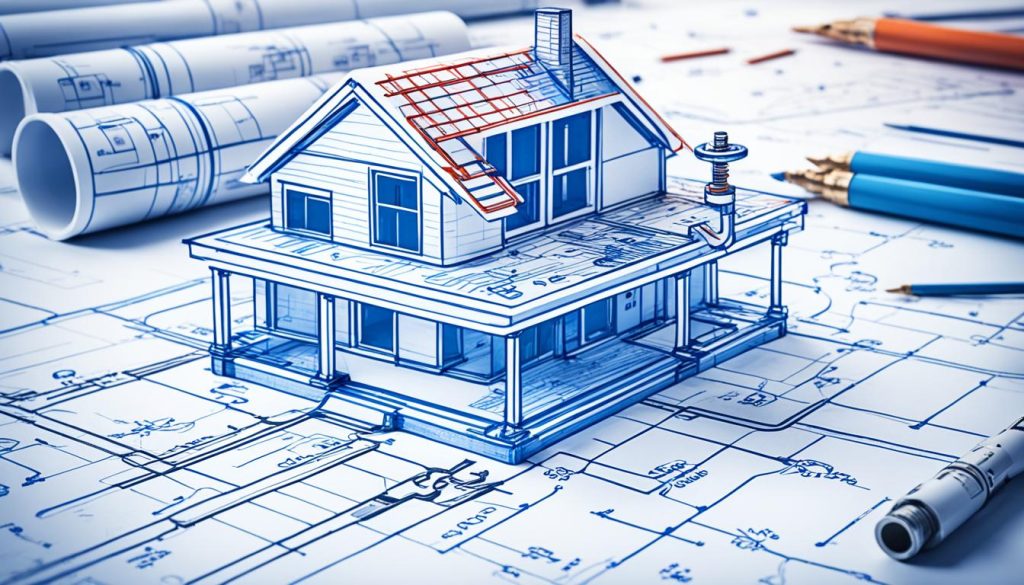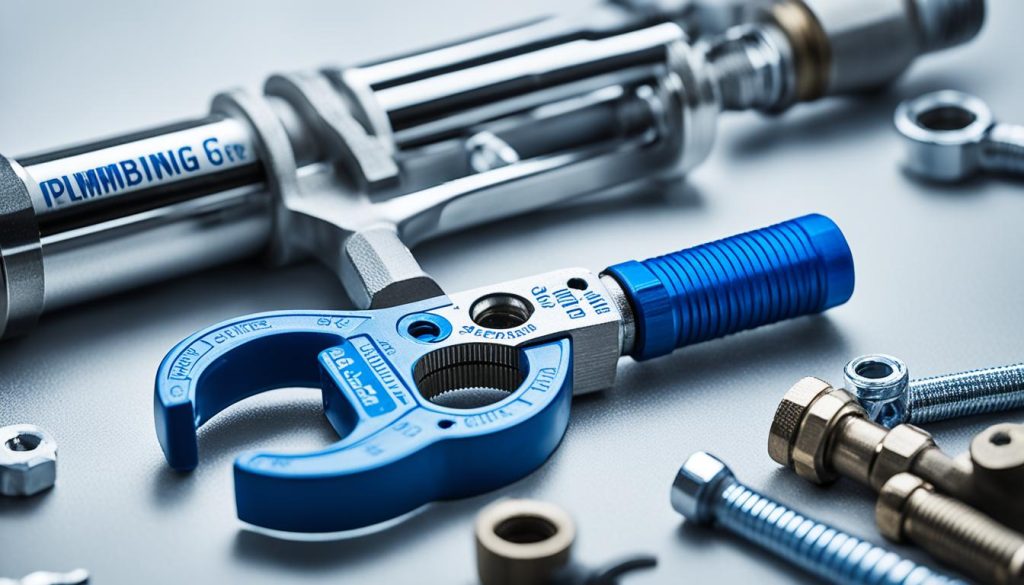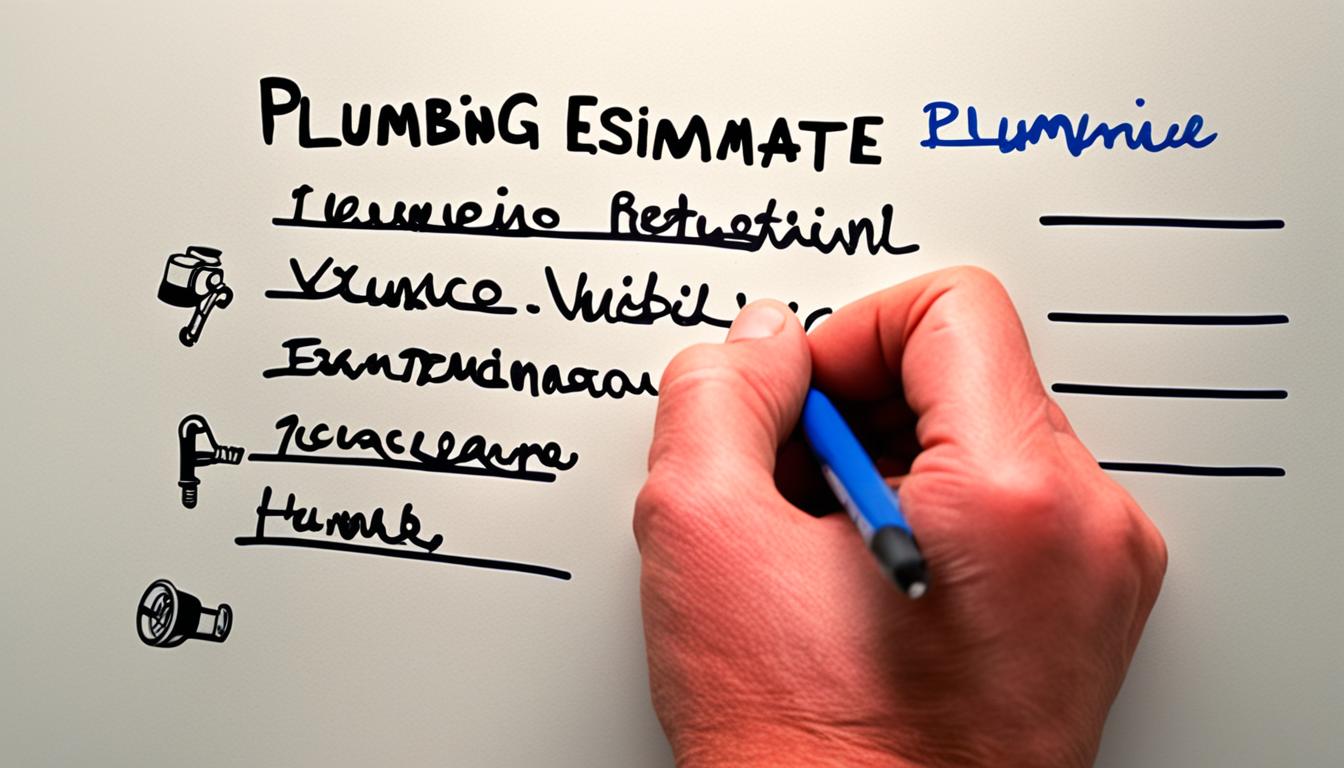When it comes to pricing plumbing jobs, having a reliable and accurate estimate is essential. Not only does it help ensure profitability for your business, but it also instills confidence in your customers. A plumbing estimate serves as a framework that allows you to price your services effectively, track your finances, make informed choices about materials and equipment, set realistic expectations for your customers, and allocate resources efficiently.
To determine the right rates, you need to consider various factors such as overhead costs, market prices in your locality, and the scope of the plumbing project. Having a solid understanding of these elements will help you provide accurate and competitive estimates that benefit both your business and your customers.
Key Takeaways:
- Accurate plumbing estimates are vital for your business’s profitability and customer satisfaction.
- Having a reliable estimate framework allows you to track your finances and make informed choices about materials and equipment.
- Consider factors such as overhead costs, market prices, and project scope when determining your plumbing rates.
- Providing accurate and competitive estimates benefits both your business and your customers.
Understanding Different Types of Plumbing Estimates Examples
When it comes to providing accurate plumbing estimates, it’s important to familiarize yourself with the different types of estimating methods available. By understanding these methods, including hourly rates, flat-rate fees, and square foot estimates, you’ll be better equipped to offer the best possible plumbing quotes to your customers.
Hourly Rates
Hourly rates involve calculating your total monthly operating expenses and dividing that by the number of hours you spend on plumbing work. This method is ideal for simple repairs and allows for flexibility in pricing. By determining your overhead costs and factoring them into your hourly rate, you can provide a fair and affordable plumbing estimate.
Flat-Rate Fees
Flat-rate fees are another common method used in the industry. With this approach, you estimate the time it will take to complete a plumbing job and charge a fixed rate based on that estimate. Flat-rate fees provide upfront pricing for your customers, giving them peace of mind. Additionally, this method allows you to efficiently take on more jobs, as it avoids surprises and uncertainties associated with hourly rates.
Square Foot Estimates
In certain cases, square foot estimates are applicable, especially for projects where the layout of the plumbing system is closely tied to the overall size of the structure. When using this method, it’s important to consider factors such as the complexity of the job, the materials needed, labor rates, and construction market conditions. By evaluating these factors, you can provide a reliable plumbing cost estimator that accurately reflects the needs of the project.
Understanding these different types of plumbing estimates examples enables you to offer the best plumbing service quote that caters to your customers’ needs and ensures your pricing is competitive in the market. Remember to consider the scope of the project, materials required, labor costs, and overall expenses when determining the most appropriate estimating method for each job.
Factors to Consider in Plumbing Estimation
When estimating plumbing jobs, there are several factors that need to be taken into consideration. By carefully considering these factors, you can ensure that your plumbing estimate is accurate and reflects the true cost of the project. Here are some key factors to keep in mind:
1. Review the Bid Request
Start by thoroughly reviewing the bid request from the client. Pay close attention to any unique requirements or specifications that have been set for the project. Understanding these requirements will help you tailor your estimate accordingly.
2. Project Location, Pacing, and Duration
The location of the project can have an impact on the cost of plumbing services. Factors such as local building codes, sourcing materials, and transportation costs need to be taken into account. Additionally, the pacing and duration of the project will determine the amount of labor and resources required, which will influence the estimation.
3. Review Drawings and Plans
Take the time to review the drawings and plans for the plumbing project. Look for any special project details that may impact the pricing. This can include complex layouts, unique fixtures, or specific materials needed for the job.
4. Perform a Quantity Takeoff
Performing a quantity takeoff is crucial in determining the materials needed for the plumbing project. This involves accurately measuring and quantifying the materials required, such as pipes, fittings, and fixtures.
5. Consider Material and Labor Costs
Consider both material and labor costs when estimating the plumbing job. Research the cost of materials and factor in any additional expenses such as permits or subcontracting. Additionally, account for labor costs and overhead expenses to ensure an accurate estimation.
6. Price the Estimate for Profitability
It is important to price your plumbing estimate for profitability. Add a profit margin to the estimate that accounts for your overhead costs and desired profit. This will ensure that your estimate is not only accurate but also allows for profitability.
7. Create a Comprehensive Proposal
Once you have calculated the plumbing estimate, create a comprehensive proposal that includes all the necessary details. This proposal should outline the scope of work, a breakdown of costs, and any terms or conditions. Submit this proposal to the client to provide them with a clear understanding of the project.
By considering these factors in your plumbing estimation process, you can provide accurate quotes to your clients and establish a transparent and reliable pricing system.

Researching Specialty Items and Materials
Researching specialty items and materials is an essential step in providing accurate plumbing estimates. These items, including special fixtures, technologies, and installation techniques, often require additional costs and expertise. To ensure a reliable and competitive estimate, it is crucial to gather all the necessary information about these specialty items.
When researching specialty items, consider factors such as availability, pricing, labor requirements, and tools needed for installation. By understanding the various aspects of these items, you can accurately assess the overall cost of the plumbing project and provide your clients with a detailed and transparent plumbing estimate.
For example, specialized fixtures such as high-end faucets, showerheads, or toilet systems may have a significant impact on the overall cost. These fixtures generally come with different price ranges depending on their quality, style, and functionality. Researching the market for these specialty items will allow you to provide accurate pricing options to your clients.

Additionally, stay up to date with the latest plumbing technologies and installation techniques. This includes researching eco-friendly options, smart plumbing systems, and innovative tools that can enhance the efficiency and functionality of plumbing systems. By offering these cutting-edge solutions, you can attract clients who value sustainability and advanced technologies.
To further illustrate the importance of researching specialty items and materials, here is a table showcasing a comparison of different specialty fixtures commonly used in plumbing projects:
| Specialty Fixture | Average Price Range | Labor Requirements | Tools |
|---|---|---|---|
| High-end Faucet | $200 – $500 | May require professional installation | Standard plumbing tools |
| Smart Shower System | $500 – $1,500 | May require advanced knowledge of electronic systems | Plumbing tools and electrical equipment |
| Eco-Friendly Toilet | $300 – $800 | May require specialized installation for water-saving features | Standard plumbing tools |
By conducting thorough research on specialty items and materials, you can provide your clients with accurate plumbing estimates that reflect their specific needs and preferences. This attention to detail and commitment to staying informed about the latest industry trends will set you apart as a reliable and trustworthy plumbing service provider.
Conducting a Takeoff and Labor Calculation
Once you have gathered all the necessary information, it is time to conduct a takeoff and labor calculation. A takeoff involves reviewing the plans and listing all the items that need to be included in the estimate.
Ensure that you haven’t missed anything by double-checking your calculations or having someone else review them. Labor costs should also be calculated based on factors such as the complexity of the job, the experience of the plumbers, and any additional labor requirements such as subcontracting or travel time.
Example Takeoff Checklist:
| Item | Quantity | Unit Cost | Total Cost |
|---|---|---|---|
| Pipes | 80ft | $5.00 | $400.00 |
| Fittings | 20 | $2.50 | $50.00 |
| Valves | 5 | $10.00 | $50.00 |
| Labor | – | $40.00/hour | $400.00 |
By carefully reviewing the plans and conducting a thorough takeoff, you can ensure that your estimate includes all the necessary items and materials for the plumbing project. Additionally, accurately calculating labor costs will help you determine a fair and competitive quote for your services.
Now that you have completed the takeoff and labor calculation, you are ready to make adjustments and include any additional costs in your plumbing estimate. This will help you provide clients with a comprehensive proposal that outlines all the necessary details and ensures transparency in pricing.
Making Adjustments and Including Additional Costs
When creating a plumbing estimate, it’s crucial to make adjustments and consider any additional costs that may affect the final price. This ensures that your estimate is accurate and comprehensive, providing your clients with a clear understanding of the total cost involved. Here are a few key factors to keep in mind:
- Specific requirements: Take into account any specific requirements from the client or project that may impact pricing. This could include liability insurance, warranty periods, change orders, or the use of specific manufacturers or customizations.
- Project location: Consider the location of the project and any special requirements it may have. Certain areas may have unique building codes or regulations that could affect costs.
- Equipment costs: Factor in the costs of any specialized equipment that may be required for the project. This could include tools or machinery needed for installation or repairs.
- Additional labor costs: If the project requires additional labor, such as subcontractors or specialized workers, make sure to factor in their costs as well.
- Material costs: Review the materials needed for the job and calculate their costs accurately. Consider market prices and any fluctuations that may affect material expenses.
- Overhead costs: Don’t forget to include overhead costs in your estimate. This could include expenses such as office rent, utilities, or administrative fees.
By meticulously considering these adjustments and including any additional costs, you can provide your clients with a reliable plumbing cost estimate that accurately reflects the scope and requirements of their project. This transparency builds trust and ensures that both parties are on the same page when it comes to pricing.
Creating a Comprehensive Proposal and Follow-Up
Once you have completed your plumbing estimate, it is crucial to create a comprehensive proposal that leaves no room for ambiguity. By including a detailed breakdown of costs, a clear scope of work, and any additional terms or conditions, you provide transparency to your clients and build trust in your service. A well-structured proposal helps ensure that both parties are on the same page, minimizing the risk of disputes down the line.
When submitting your proposal, make sure to adhere to the format specified by the client. This shows your professionalism and attention to detail. Provide the estimate in writing, whether through email, a formal letter, or a dedicated proposal template. By doing so, you demonstrate your commitment to delivering accurate and reliable plumbing quotes.
Following up on your estimate is equally important. It allows you to address any questions or concerns the client may have promptly. Timely communication not only showcases your commitment to customer satisfaction but also helps in building long-term relationships with clients. Maintain an open line of communication and be prepared to explain any aspects of your estimate that may require clarification. By being proactive in your follow-up, you can ensure that your proposal receives the attention it deserves and increase the chances of securing the job.
Source Links
- https://www.method.me/pricing-guides/plumbing-estimates-example/
- https://www.servicetitan.com/blog/plumbing-estimating
- https://www.procore.com/library/plumbing-estimating
